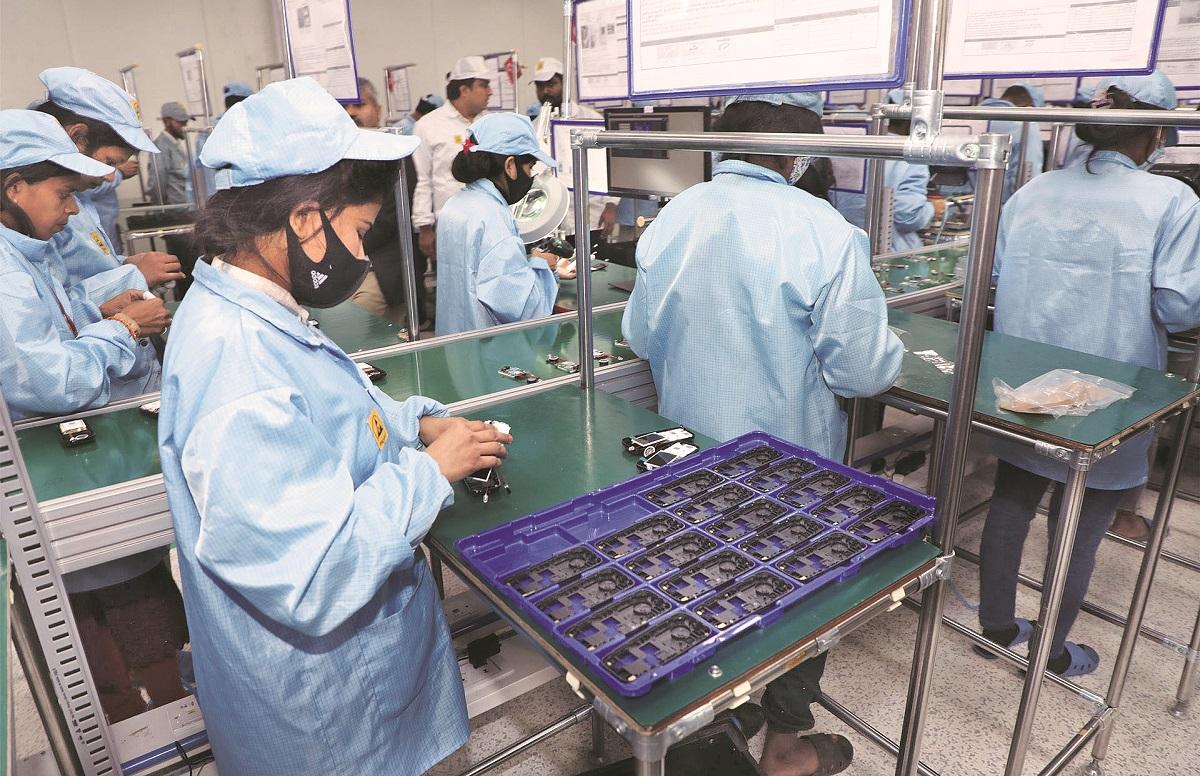- Arvind's Newsletter
- Posts
- Arvind's Newsletter
Arvind's Newsletter
Issue No. #1146
1.Not the Pilot’s Fault: Inside the First 61 Seconds of AI171: Indrajit Gupta in Founding Fuel
The AAIB’s preliminary crash report showed that fuel switches on both engines of the ill-fated Air India AI 171 moved from “RUN” to “CUTOFF” within seconds of lift-off.
Why did that happen? This question is at the heart of the investigation.
Indrajit Gupta cuts through the speculation. He builds the case that “It is becoming increasingly clear that human error did not cause the crash of Air India flight AI171.”
It is possible that it was a systems failure—electrical or mechanical—that went undetected by the aircraft’s avionics. And this isn’t the first time this has happened. Read on
2.China electronics entry may hinge on tech transfer JVs with Indian firms: Economic Times
The Indian government is likely to support Chinese investments in the electronics sector if they come through joint ventures with Indian firms and entail technology transfer, instead of only setting up assembly units, said officials.
The ministry of electronics and IT (MeitY) is clear that approval to some Chinese investments is critical for manufacturing to shift to India, as well as for the success of the upcoming component incentive scheme, they told ET.The ministry is, hence, backing easing of norms for investments from the neighbouring country, they said.
The views are aligned with those of the industry, which has been seeking government agreement for tie-ups with Chinese players, as well as those of government think tank Niti Aayog, which proposed allowing Chinese entities to buy up to 24% stake in Indian firms without additional check.
Quite a few Indian contract manufacturers, such as Dixon Technologies and Bhagwati (Micromax), have signed joint venture agreements with Chinese partners that are awaiting approval from the government.
3.India's own Foxconn? Dixon's PLI-powered road map may reshape electronics: Business Standard
Dixon Technologies has earned a rare distinction: it is the only Indian company ranked among the top 20 global electronic manufacturing services (EMS) players by revenue in 2024, according to research agency Manufacturing Market Insider. In a league dominated by heavyweights like Foxconn, Pegatron, and Luxshare, Dixon’s presence is a significant achievement for a homegrown brand.
Still, the scale difference is stark. Dixon’s 2024-25 (FY25) revenues, at ₹38,860 crore, are just a quarter of Foxconn’s revenues from India alone (₹1.72 trillion), thanks largely to Apple Inc, which remains the dominant force in the Indian EMS landscape.
Yet, Dixon has set its sights high. The company aims to break into the top 10 of the global EMS rankings within the next three years. That will require it to more than double its revenues — an ambitious but not impossible leap.
To fuel this growth, Dixon is transitioning from being a predominantly domestic assembler — smartphone assembly accounted for 89 per cent of its revenue as of Q3 FY25 — to becoming a deeper player in the electronics value chain. The strategy: aggressive backward integration into sub-assemblies and components.
To kickstart the strategy, Dixon, last week, announced two key partnerships with Chinese firms. First, it will acquire a 51 per cent stake in Qtech India, which is part of China’s Qtech Group that makes mobile camera and fingerprint modules in India for original equipment manufacturers (OEMs) such as Vivo and Oppo. Second, it plans a joint venture with Chongqing Yuhai Precision, with a 74 per cent stake to manufacture precision mechanical and metal parts and components for mobile phones and laptops.
4.In charts: The red flags behind the $40 billion electronics exports: Mint
India indeed exported electronic goods worth $40.9 billion in 2024-25. However, it is equally important to note that the country also imported $102.6 billion worth of electronic goods, making it a net importer by a huge margin. Over the years, several questions have been raised about India’s import dependence in electronics, even as the country has made great strides in the segment.
Electronics exports have indeed been a bright spot in India’s export basket. The segment’s growth has been around or above 30%, surpassing the growth in the country's overall exports in several years since 2018-19. At the same time, growth in electronics imports has also been robust, averaging around 10% between 2018-19 and 2024-25.
The good news is that India’s electronics imports, despite being high, have come down as a share of exports. India’s imports used to be 7.4X the exports in 2017-18, which began declining steadily as exports picked up the pace from 2018-19. Currently, imports are 2.5X the exports.
The gap is still huge, and heavy reliance on China for imports makes India particularly vulnerable. In the past decade, Chinese import share in the electronics segment has come down by 10 percentage points, but at around 40%, the dragon’s presence as the single biggest source is worrying. Read on Gift article.
5.Multinationals turn to India’s back offices (GCCs) for AI engineers: Financial Times
Multinational companies struggling to compete for hires in the red-hot market for artificial intelligence engineers in their home countries are turning to back offices in India to meet their core AI needs.
Several groups including McDonald’s and UK insurer Bupa have unveiled plans in recent months to establish so-called global capability centres, which can perform a wide range of big-data tasks such as remotely monitoring fridge temperatures and offering customers personalised recommendations.
The centres represent a shift for India’s back offices from providing support services to performing core competitive functions that directly affect companies’ profitability. They come as hiring AI engineers in the US and Europe has become increasingly expensive, with some technology groups offering eye-watering sign-on bonuses for top talent.
With non-tech companies struggling to attract engineers, the back offices can “bridge the gap with [India’s] availability of deep, scalable AI expertise”, said Lalit Ahuja, chief executive of ANSR, a consultancy that helps companies set up global capability centres. “As a result, GCCs are rapidly emerging as a strategic AI backbone for many of these organisations,” he said.
Tesco pivoted its GCC to focus on AI-based solutions for cost savings in 2019. Sumit Mitra, chief executive of Tesco Business Solutions, which provides services to the UK retailer, said the back office had gone from being a “labour arbitrage story” when it first opened in 2003 to an “intellectual arbitrage story”.
Read on. Gift Article
6.TSMC’s Taiwan Stock Value Surpasses $1 Trillion Amid AI Frenzy: Bloomberg
Taiwan Semiconductor Manufacturing Co.’s market value closed above $1 trillion for the first time in Taipei last week, with a raised sales forecast driven by robust artificial intelligence demand.
The main supplier of chips to Apple Inc. and Nvidia Corp. saw its Taiwanese shares climb to a record high on Friday, a near 50% rise from an April low. That has made it the first Asian stock worth more than $1 trillion, since PetroChina Co. briefly reached the milestone in 2007.
TSMC’s stock surge reflected growing investor confidence that the world’s top chipmaker will ride the AI boom to even greater dominance. The company raised its full-year revenue growth forecast to about 30% last week, signaling TSMC may benefit in a tightening race for AI manufacturing capacity.
7.A Japanese power company unveiled plans for the country’s first nuclear reactor since the 2011 Fukushima meltdown: Financial Times
The earthquake and ensuing tsunami that year killed around 18,000 people, and severely damaged a nuclear plant, leading Tokyo to shut down almost all the country’s reactors. But since 2022, Japan— facing high energy costs and dependent on overseas imports — has U-turned, reactivating 14 plants. Public opinion on nuclear power has also shifted.
Kansai Electric Power will begin a survey in the country’s south, although it may take years to complete. The government wants to boost nuclear power generation to 20% of Japan’s total electricity mix, more than double what it is now but still short of nuclear’s 30% level pre-Fukushima.
8.Four-Day Workweek Study
Results from the largest trial of four-day week , published yesterday, revealed the shortened schedule—without any pay cuts—boosts job satisfaction, reduces burnout, and improves well-being.
Nearly 2,900 workers from 141 organisations in the US, Canada, the UK, Ireland, Australia, and New Zealand shifted to 32-hour four-day weeks for six months. Companies had two months to restructure workflows, largely by trimming unnecessary meetings. At the end of the study, employees reported improved performance, better sleep, and less fatigue. Over 90% of participating companies kept the truncated schedule, suggesting output and profit weren’t harmed, though the study didn’t measure company-wide productivity.
While many Americans view the five-day workweek as standard, it only became commonplace after the passage of the Fair Labor Standards Act in 1938. Interest in shorter workweeks has grown since the COVID-19 pandemic reignited conversations about work-life balance, with 22% of national survey respondents reporting their employer offered four-day weeks in 2024, compared to 14% in 2022.
9.Buzzy titles to blockbusters: 10 of the best summer reads: BBC
“From buzzy titles like Vincenzo Latronico's Perfection to Taylor Jenkins Reid's latest blockbuster, here's our pick of the best books to escape with this summer.
Depending on your tastes, the perfect summer read might mean catching up with 2025's most talked-about novels, immersing yourself in an epic family saga, or enjoying some biting satire on the current state of the world. Either way, these 10 titles are all worthy of escaping with for a few hours.”








